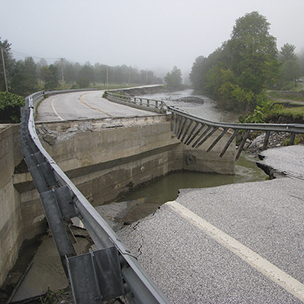June 4, 2015 — Climate science tells us future weather is going to be dramatically different than it is today. Exactly how different, and in what ways, is unknown, however, particularly at regional and local scales. What’s an engineer who’s designing power plants, bridges and other infrastructure meant to last for a half-century or more to do?
Adopt a whole new way of working, suggests the American Society of Civil Engineers.
When designing infrastructure, engineers currently take extreme weather into consideration — but also assume that tomorrow’s extremes will look like those of today, a premise that is becoming increasingly untenable as we learn more about climate change. Unfortunately, the actual size and rate of change likely to take place over the lifespans of things we’re building now is unsettlingly uncertain. Not only that, but preparing for extremes can be expensive, so overpreparation carries costs that must be balanced against the risk of being underprepared.
In response, the society last week released a 103-page report calling for engineers, policy makers and others involved in making decisions about infrastructure investments to change the way they envision, design and build bridges, water systems and other such structures. After providing engineering-oriented background on climate science, the report, Adapting Infrastructure and Civil Engineering Practice to a Changing Climate, offers four key recommendations:
- Work more closely with scientists to generate and apply knowledge aimed at predicting future conditions.
- Seek to better understand uncertainty in predicting future climate, and use that understanding to improve decisions about how to weigh the cost of preparing for bigger extremes with the cost of failure if infrastructure can’t meet them.
- Develop a new framework for making decisions in a climate-uncertain world — specifically, adopt “low-regret” strategies that are amenable to mid-course correction as conditions change and trajectories become more clear.
- Identify and alert the public to existing infrastructure that’s most at threat from climate change, and provide cost-benefit information needed to make good decisions regarding what to do about them.
Photo by Vtrans (Flickr | Creative Commons)
Ensia shares solutions-focused stories free of charge through our online magazine and partner media. That means audiences around the world have ready access to stories that can — and do — help them shape a better future. If you value our work, please show your support today.
Yes, I'll support Ensia!
